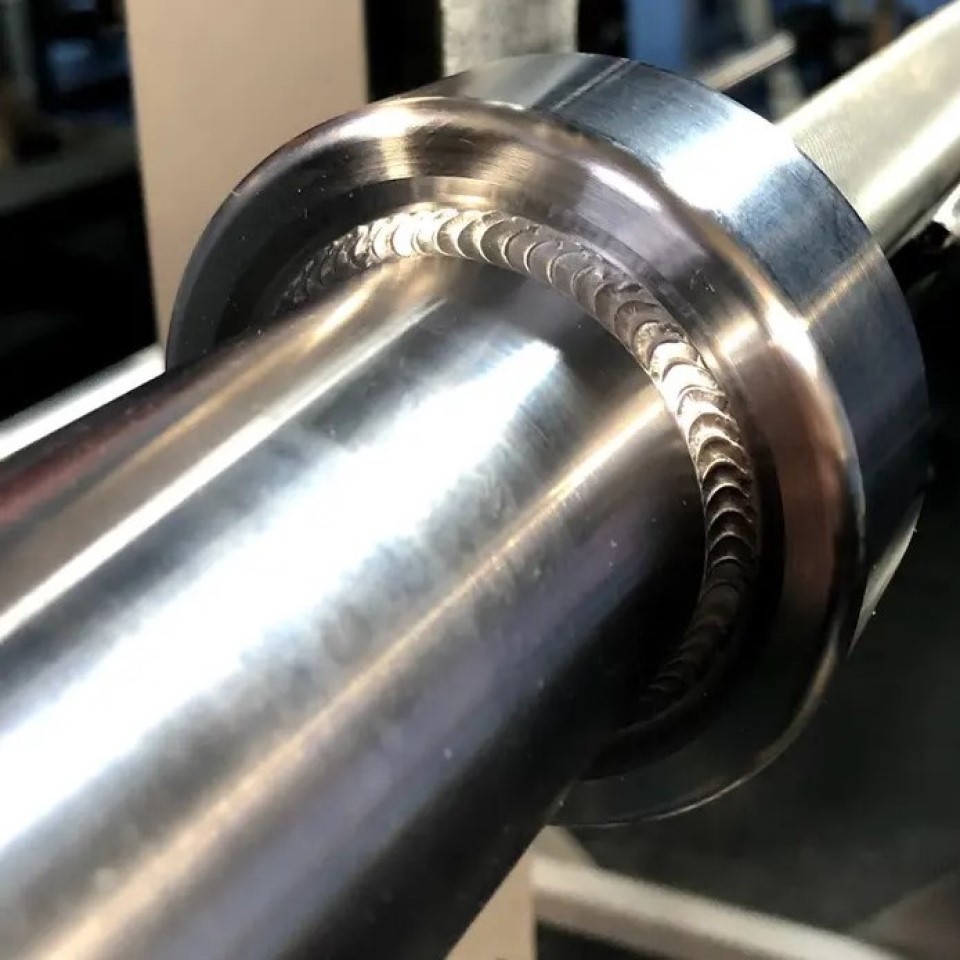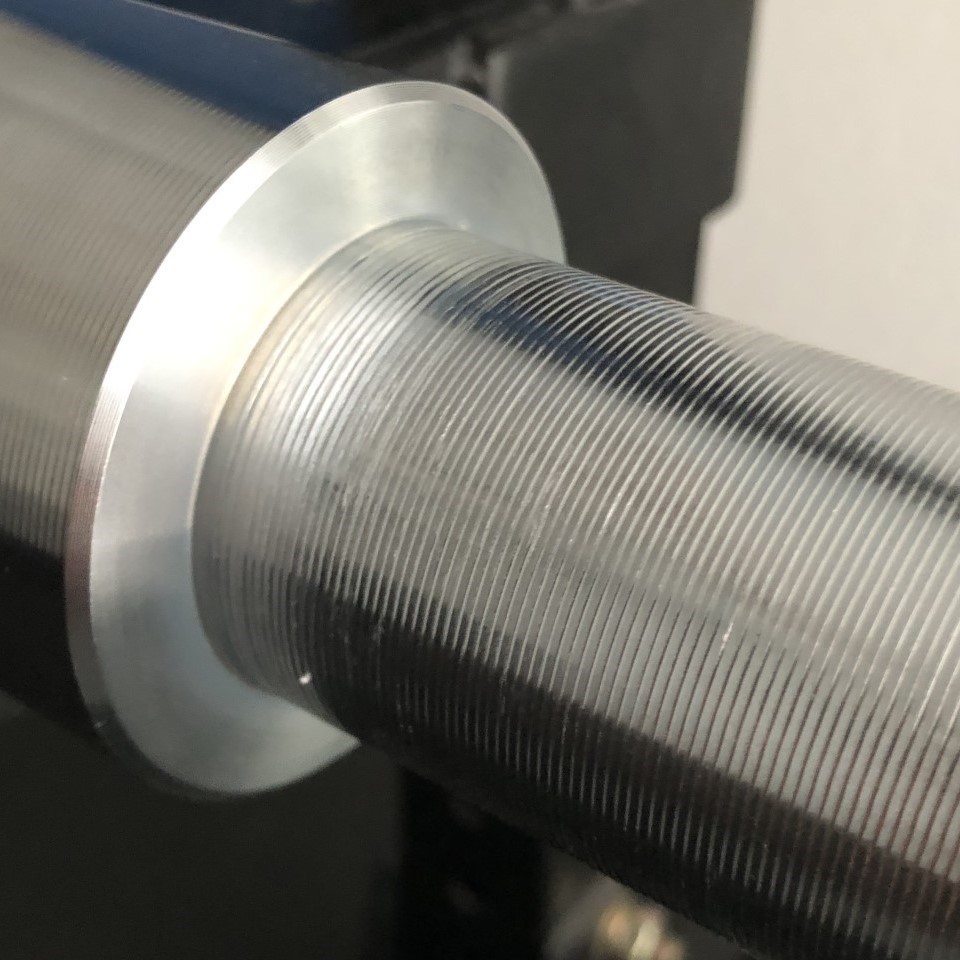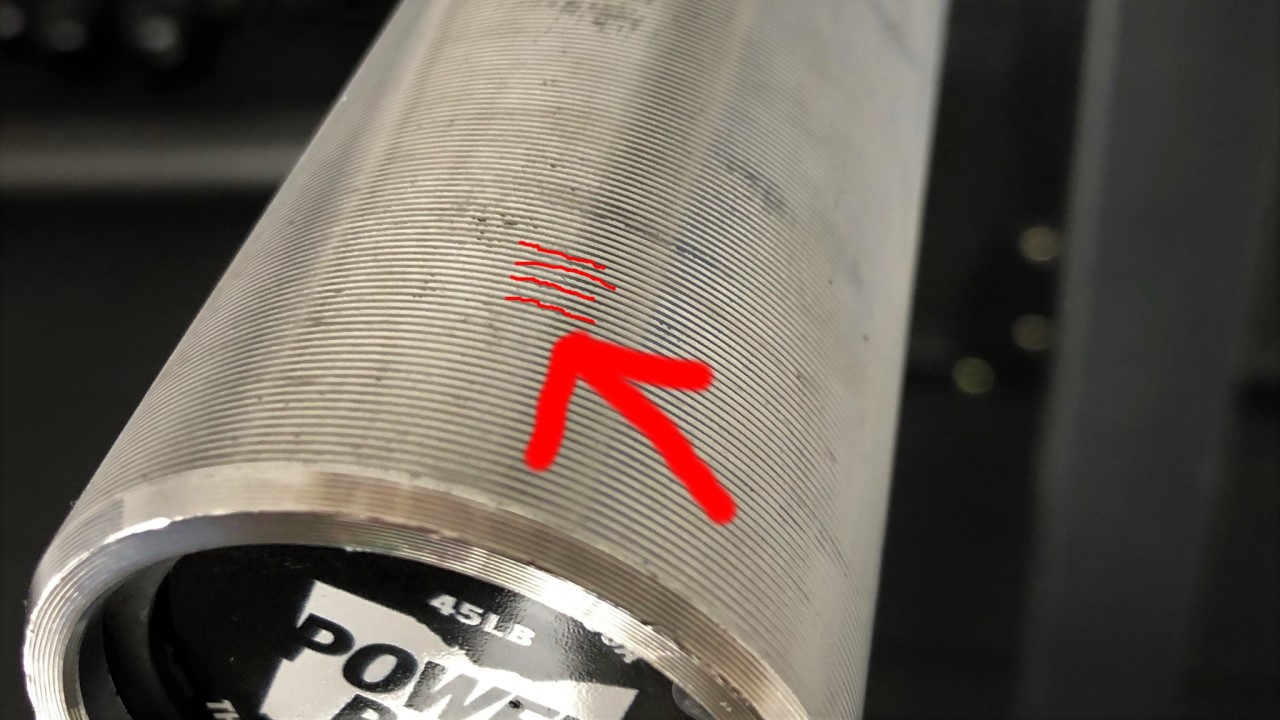REWRITE 2022 – Revised list of grooved and smooth sleeved bars, and general updates.
Table of Contents
Why The Different Styles?
For many years now, manufacturers have added small grooves onto the sleeves of olympic bars. People have also referred to them as ridges or ribbed sleeves. Some manufacturers make the grooves more aggressive than others.
Still a lot of bars are still being made the traditional way with smooth sleeves.


Rogue and Eleiko were both making a Russian-style bar for a short time, with large grooves that the collars would wind onto, much like threaded sleeves of standard bars. They were not popular. The grooves just made plates hard to load. After a few years they both phased out the style.
With grooved sleeves, the tiny grooves keep plates in place better if you choose not to secure them with collars, and they make collars stay in place by catching them a little better. Frankly, a lot of folks lift that way…
TANGENT – Lifting Without Collars
Since I mentioned it…
Experienced lifters don’t always use collars, for two reasons.
For one thing, they have found that in certain situations there’s little or no need to secure the plates. The rationale is they don’t move much, and if you know there will be no problem at all in getting the weight up smoothly then it’s much like lifting with plates loaded unsecured on a weight machine, which tends to be seen as much more acceptable. But you need to be aware of when it is and isn’t perfectly safe to do this with freeweight barbell lifting.
Doing heavy sets with unsecured plates when you have other people also lifting around you is a bad idea. Do what you like in private, but if you hurt someone else, you, sir, are a bad person.
The second reason experienced lifters may choose to not use collars is as a safety precaution when bench pressing. If they fail a heavy rep and are at risk of crushing themselves, tilting the bar to the side causes the plates to dump off one end, and with that end unloaded the bar flips the other way and the plates slide off that end. It’s a wacky way to do things, but it does work I guess, at the risk of damaging your plates and surrounding walls/equipment. It’s far better to lift in a power rack with safety bars or safety straps.
A few problems with grooved sleeves:
- The loud “zzzzzzzzzzziiiiiipp!” sound plates make running over the grooves when you load them.
- Depending on the plate design, the extra friction of grooves is annoying, because you often want to be able to slide a plate on with one hand with minimal effort. You have to push a lot harder to get a 45lb plate over the grooves.
- The grooves chew off any enamel or other finish on the plate hole, leaving you with flakes to clean over time.
Plates with steel inserts with curved edges such as bumper plates will slide much smoother against the grooves, not having edges to catch on each groove, and are much quieter as well.
The grooved sleeves are used on a lot on weightlifting-specific or general-purpose bars. Lifters doing cleans or snatches get the best use out of the grooved sleeves with all the repeated dropping of the bar from shoulder height or overhead. Decent collars stay in place a lot better, resulting in little or no shifting of plates after several drops.
On power bars you’ll see a lot of smooth sleeves. Powerlifting movements don’t involve such big drops as a matter of routine, and the grooves don’t end up being as useful. While some manufacturers go with uniformly grooved or smooth sleeves across all models of bars, others use smooth sleeves only on their power bars, and that’s the reason why.
Personally, I prefer smooth sleeves.
Brands that Use Each Style Sleeve
I’m trying to include many top brands that I can get definitive info on here. If I made a mistake or omission, let me know and I’ll update the list!
Note that this has changed over time, with manufacturers adding or removing grooves to some bars. This guide is for current models sold in the US.
Smooth Sleeves
- York Barbell
- Rep Fitness (power bars only)
- American Barbell Stainless Steel Elite Power Bar
- Intek Strength
- Fringe Sport Wonder Bar & Bomba Bar V3
- Vulcan Strength (Absolute Stainless Steel, One Basic, and Powerlifting bar)
- Titan Fitness Performance Series Power Bar
- Ivanko Barbell
- Eleiko
- Uesaka
- Troy Barbell – all newer bars
- + Most cheaper bars $115 or so
Grooved Sleeves
- Rogue Fitness
- Rep Fitness (weightlifting and general-use bars)
- Bells of Steel
- Fringe Sport Weightlifting Bar
- Wright Equipment
- American Barbell (most bars)
- Titan Fitness (most bars)
- Synergee Fitness
- Giant Lifting
- Ironmaster OB 86
- Vulcan Strength (most bars)
- EliteFTS
- ForceUSA
- Texas Power Bars
- Solid Bar Fitness
- I Sell Fitness
- Troy Barbell – Older bars only: AOB-1500B, AOB-1200B, GOB-1200
- CAP Barbell



From Eleiko Service I was told, that all their barbells also have grooved sleeves now. :(
Ok, thanks for the news! I’m emailing you to get more info.
I read the SS thread, but I won’t lie, I skipped the physics debate. I have a CAP barbell with grooves, and a SSB that is smooth. I don’t know anything about the cost to manufacture and all that; I consider the grooves to be a safety feature, because on any reasonably level rep, you don’t need collars (due to more friction than a smooth sleeve not less), but if you had to dump the plates so as not to die on a failed rep on a bench press or squat, you can tip up 1 end and they slide right off (not a problem for me, I lift in a rack). but the SSB, with smooth sleeves, requires collars on every rep.
downsides to the grooves: some find the noise of loading/unloading annoying, and if you’re not careful, you’ll occasionally get steel shavings splinters in the skin of your fingers (hurts pretty bad).
I’m a smooth sleeve guy, mainly for the lack of noise. I always use collars, without which the plates shift easily, but then maybe that wouldn’t happen if I used a bar with grooved sleeves! I just happen to be using the Troy GOB-1800 now.
I don’t generally collar my weights, except when deadlifting. Even with the grooves, touching the floor between reps causes the weights to “walk” out a bit. Not so they’d fall off, but they get sloppy and distracting.
For squats and overhead presses, I don’t collar and have never had a problem. For bench press, I would never collar the weights for the reason you mentioned. Even though I moved to benching in a rack, it feels safer not to collar (I lift alone).
The real problem for me with grooved sleeves is the noise from adding/removing weights, which is a problem in my home gym at night.
This thread on the Starting Strength board is about grooves sleeves, and quotes Rogue CS. I realize this is third hand info, but if true it does indicate Rogue is defaulting to grooved sleeves for newer bars. It’s a good thread, but I would ignore the discussion of coefficients of friction and centrifugal force, unless you’re into that sort of thing.
https://startingstrength.com/resources/forum/mark-rippetoe-q-and-a/82242-rings-knurling-sleeves-barbell-2.html#post1695147
I believe that most Rogue bars now have grooved sleeves, according to threads on other boards. Rogue doesn’t mention grooved vs smooth sleeves on their site, that I can find.
John, could you share a link where it’s mentioned that newer Rogue bars have grooved sleeves? Sometimes it’s not clear when someone is talking about an older bar they have that they assume is the same as the newest version.
Sorry, see my reply above, out of sequence.
Thanks, and I also checked with Rogue today – They confirmed that they are making all the bars with grooved sleeves. So I need to update the article!